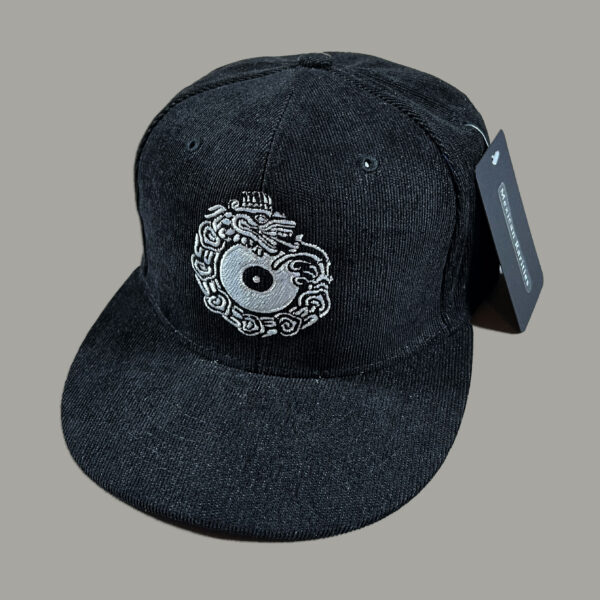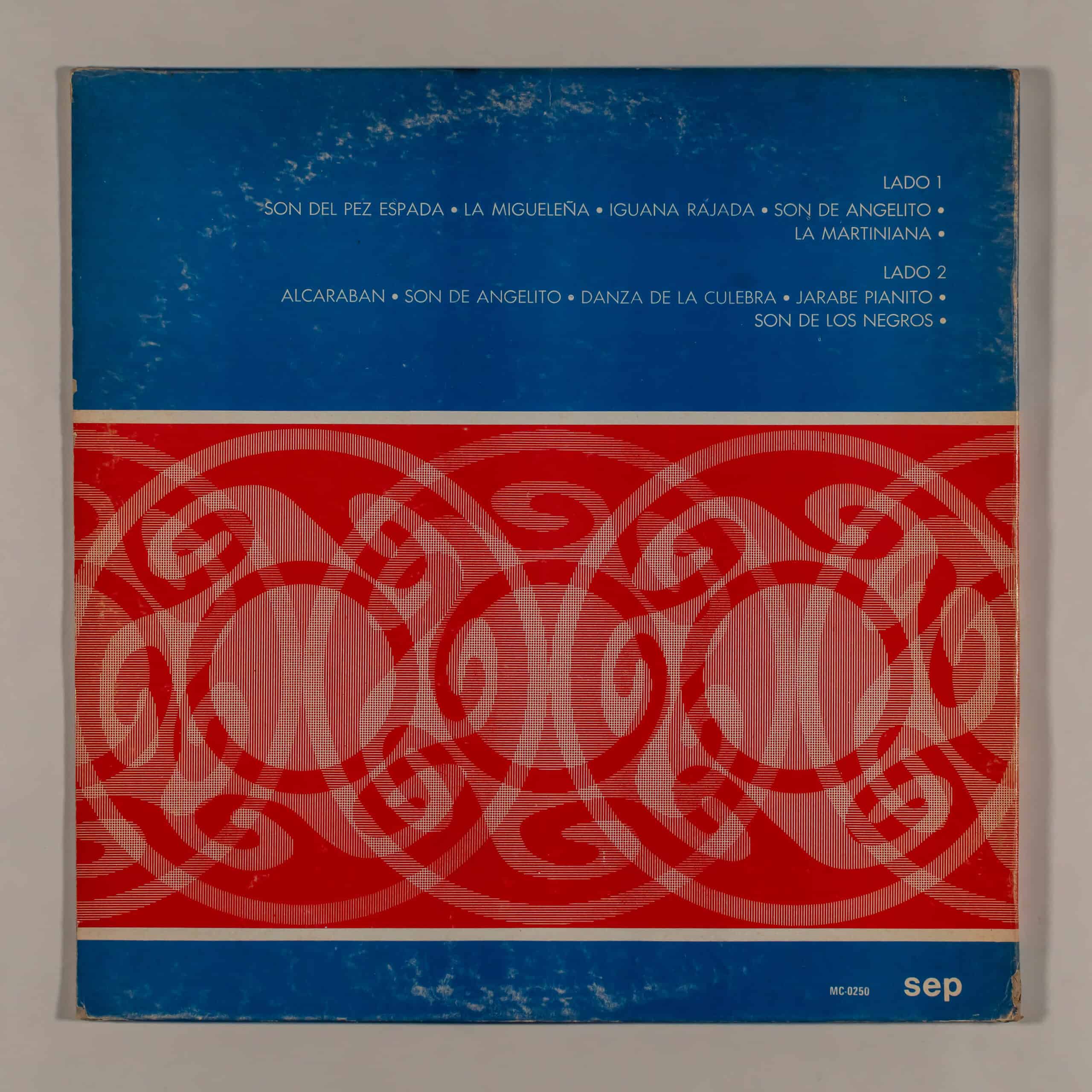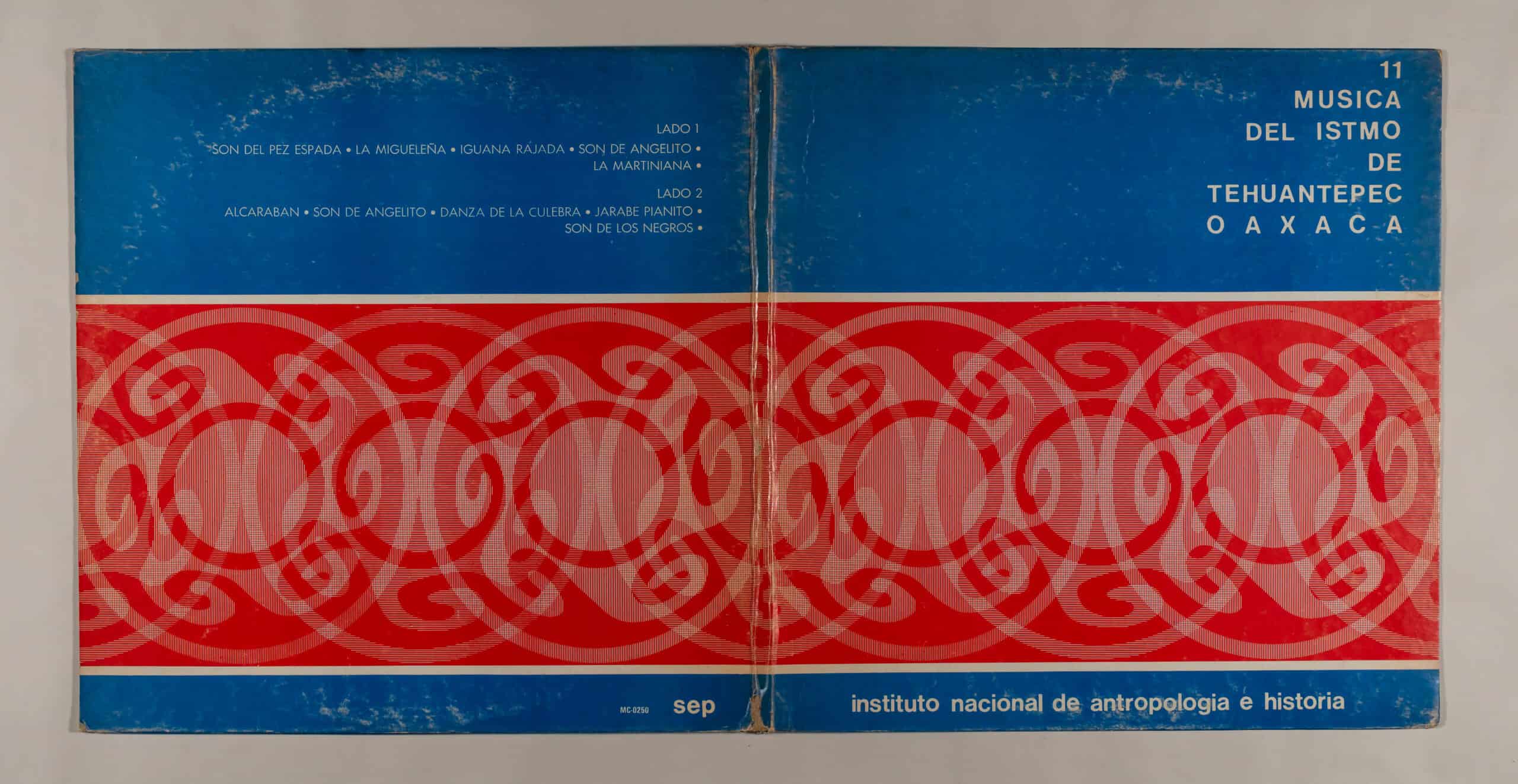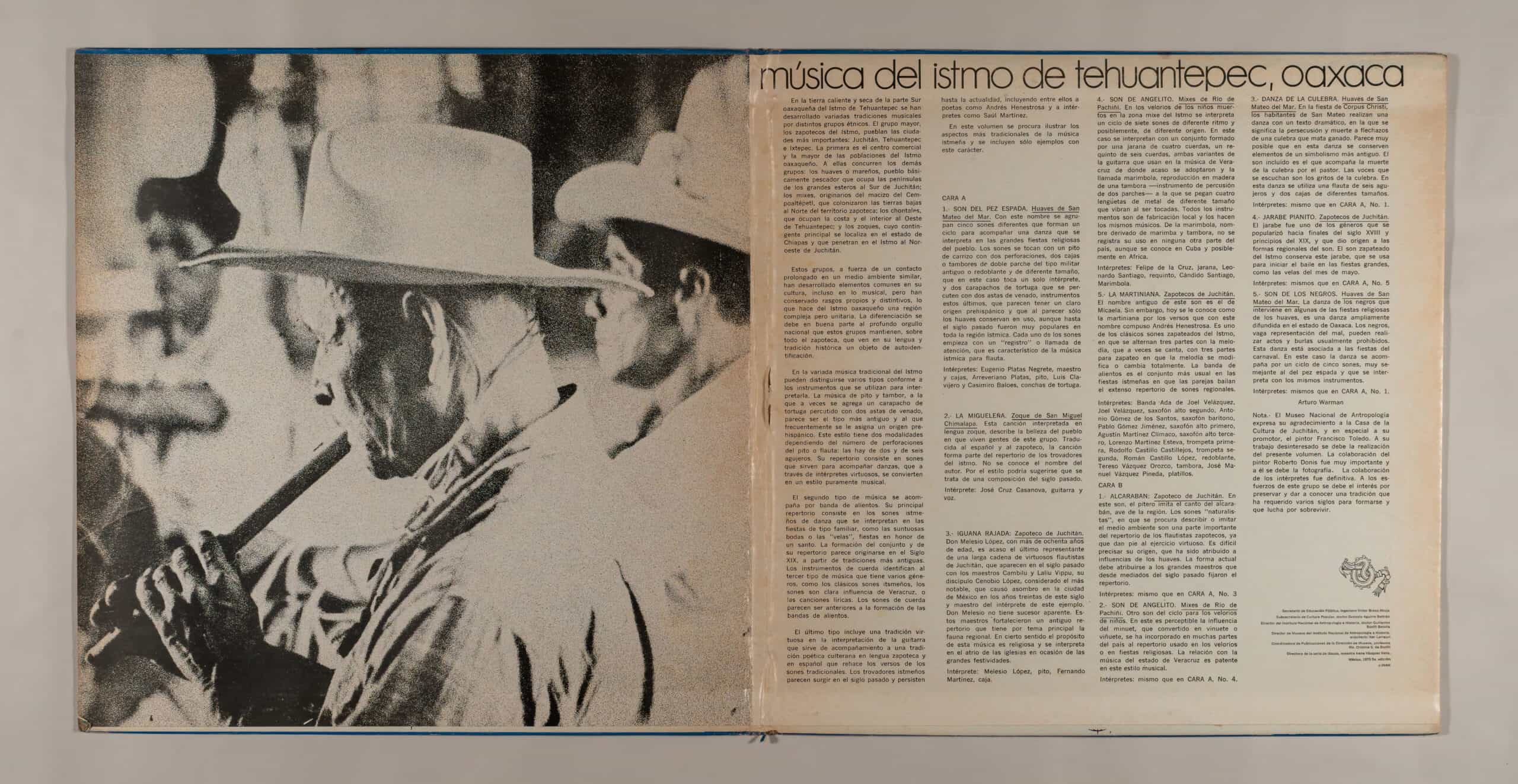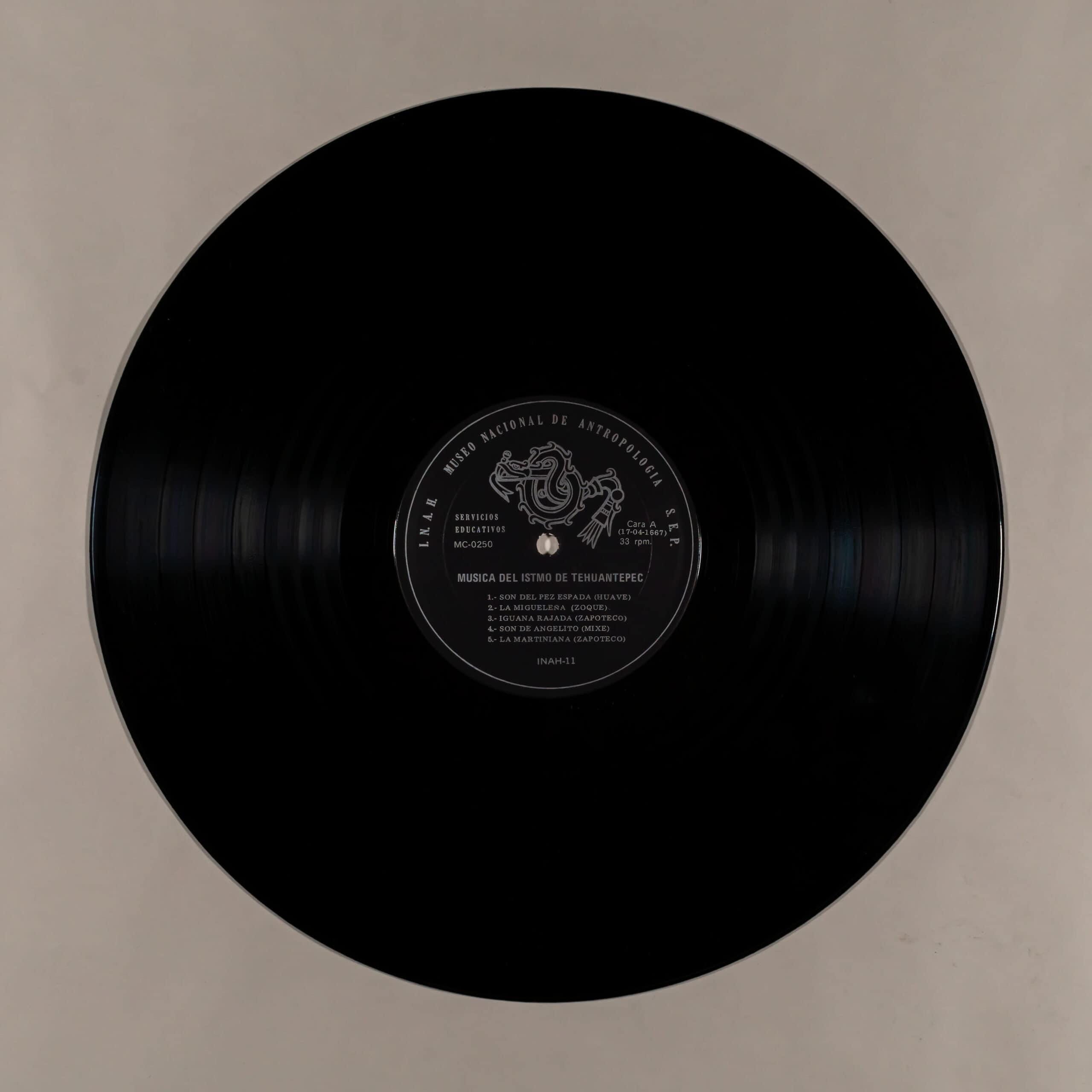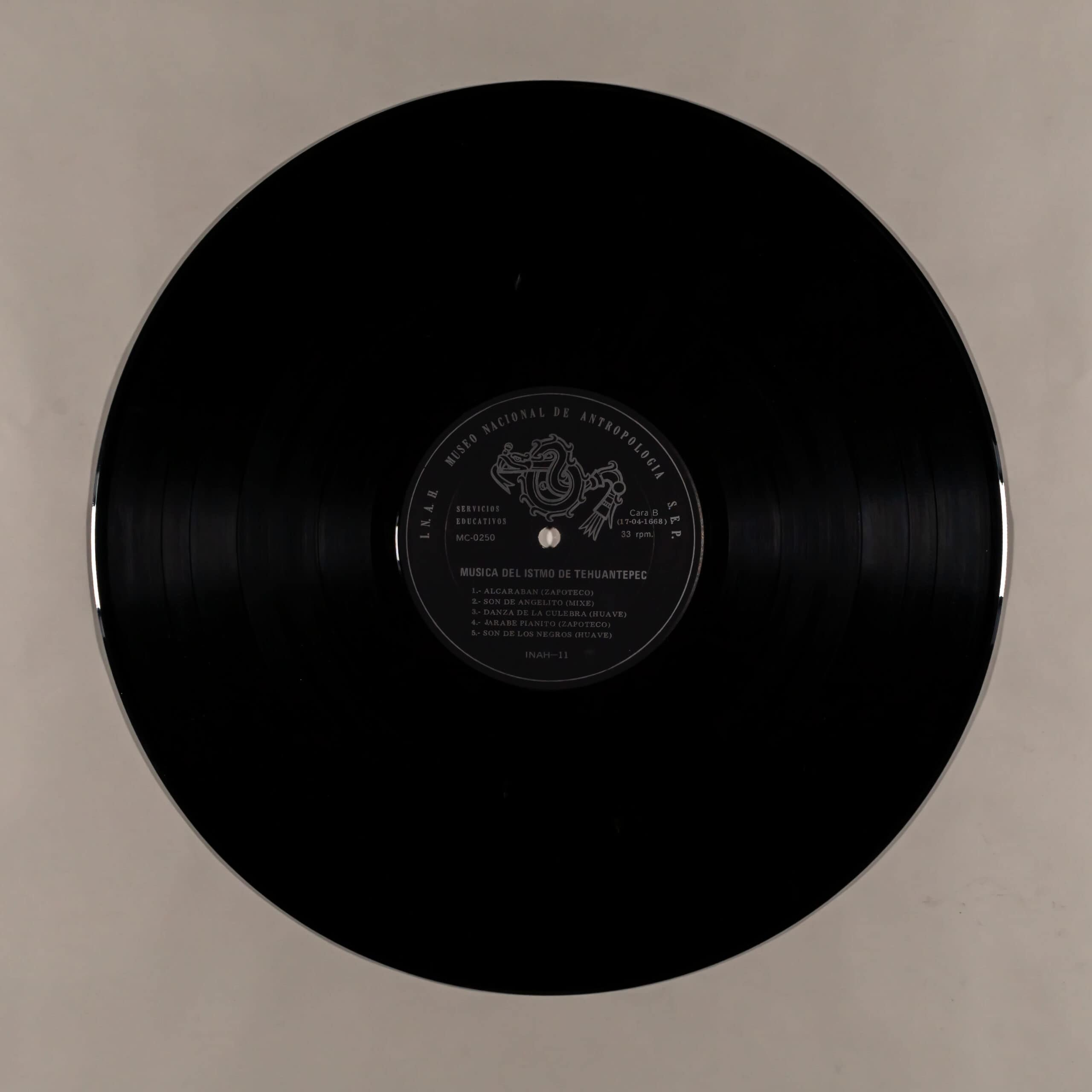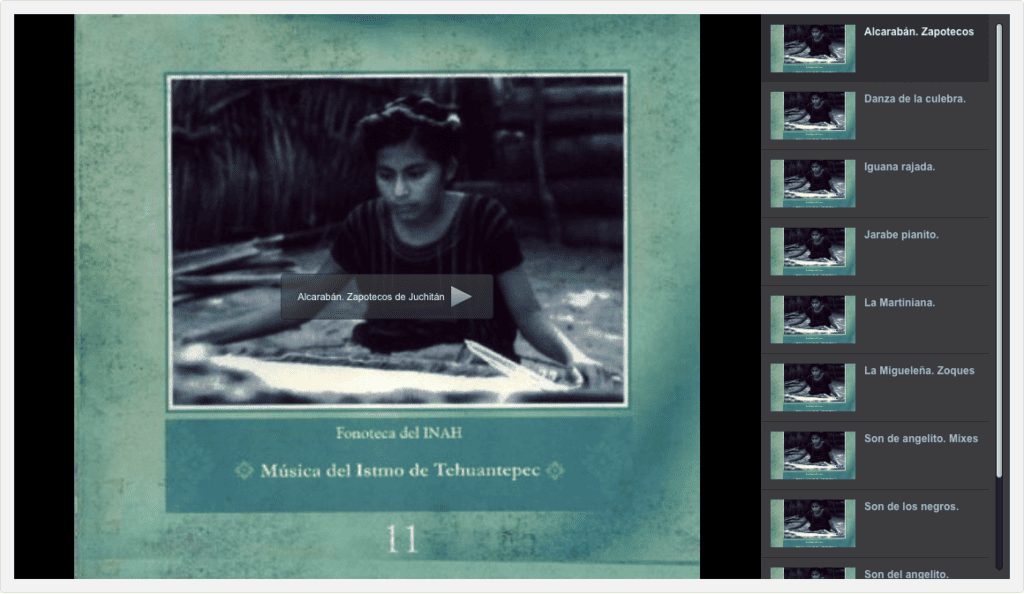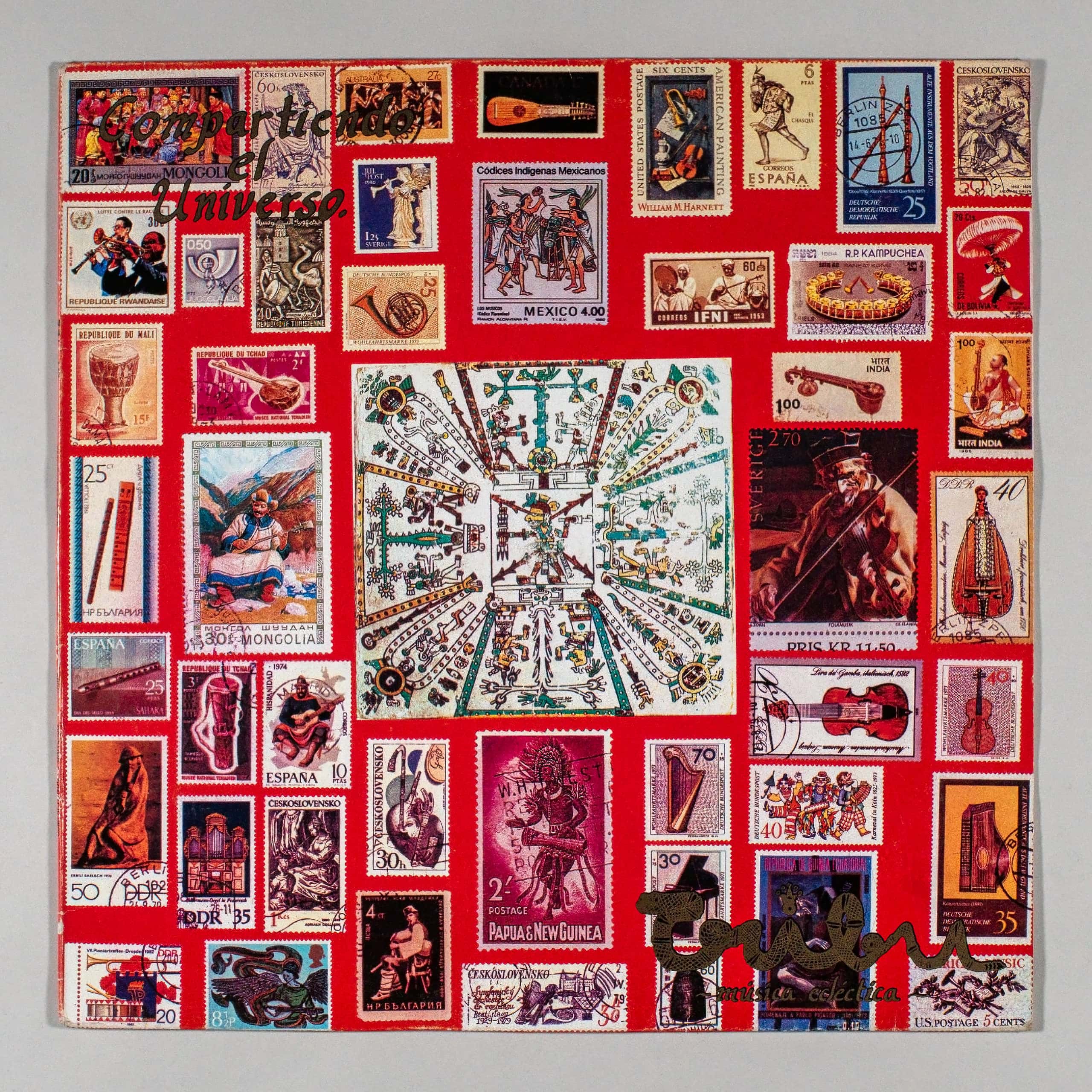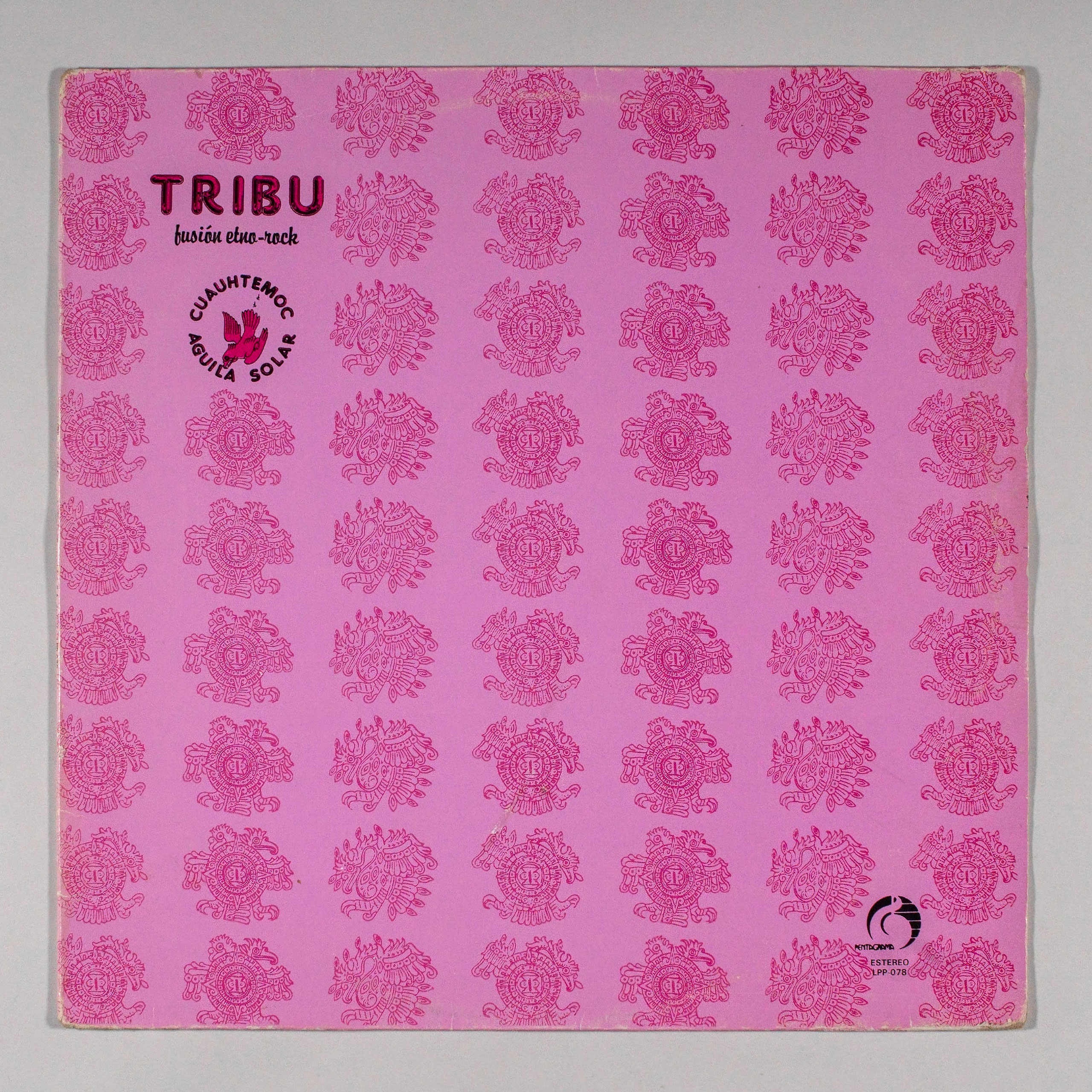MUSIC OF THE ISTHMUS OF TEHUANTEPEC OAXACA
INAH SEP
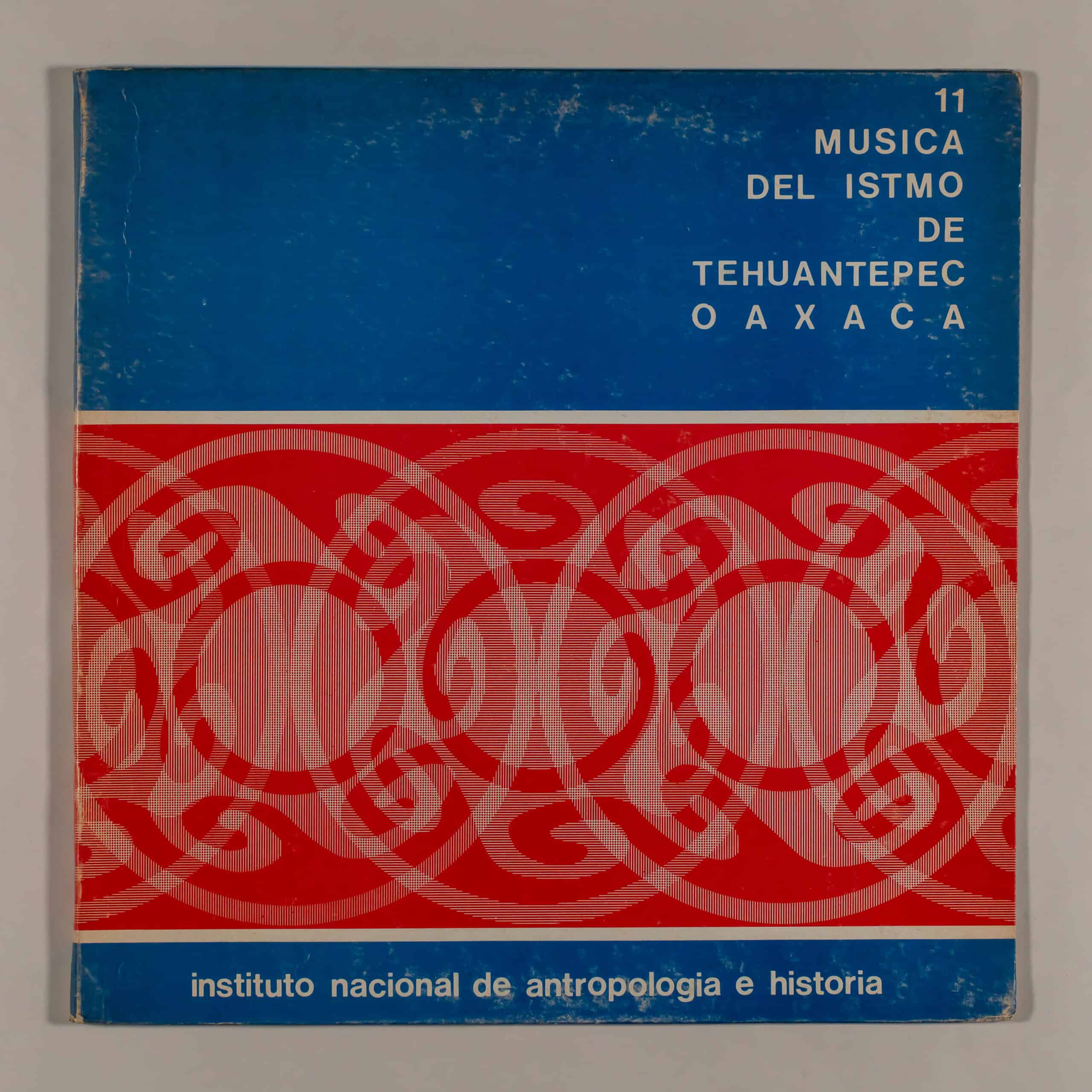
|
Label: INAH-SEP INAH-11, MC-0250 Released: 1972 |
Country: Mexico State: Oaxaca |
Info:
music of the isthmus of tehuantepec, oaxaca
In the hot and dry land of the southern Oaxacan part of the Isthmus of Tehuantepec, various musical traditions have been developed by different ethnic groups. The largest group, the Zapotecs of the Isthmus, populate the most important cities: Juchitán, Tehuantepec and Ixtepec. The first is the commercial center and the largest of the towns on the Oaxacan Isthmus. The other groups attend them: the Huaves or Mareños, basically a fishing people that occupy the peninsulas of the great estuaries to the south of Juchitán; the Mixes, originally from the Cempoaltépetl massif, who colonized the lowlands to the north of the Zapotec territory; the Chontals, who occupy the coast and the interior west of Tehuantepec; and the Zoques, whose main contingent is located in the state of Chiapas and which penetrate the Isthmus to the Northwest of Juchitán.
These groups, by dint of prolonged contact in a similar environment, have developed common elements in their culture, including music, but have preserved their own distinctive features, which makes the Isthmus of Oaxaca a complex but unitary region. The differentiation is largely due to the deep national pride that these groups maintain, especially the Zapotec, who see their language and historical tradition as an object of self-identification.
In the varied traditional music of the Isthmus several types can be distinguished according to the instruments used to interpret it. The whistle and drum music, to which a tortoise shell struck with two deer antlers is sometimes added, seems to be the oldest type and to which a pre-Hispanic origin is frequently assigned. This style has two modalities depending on the number of perforations of the dick or flute: there are two and six holes. His repertoire consists of sones that serve to accompany dances, which through virtuoso performers, become a purely musical style.
The second type of music is accompanied by a wind band. Their main repertoire consists of Istmeño dance sones that are performed at family-type parties, such as sumptuous weddings or “velas”, parties in honor of a saint. The formation of the group and its repertoire seems to originate in the 19th century, from older traditions. String instruments identify the third type of music that has several genres, such as the classic Istmeño sones, the sones are clearly influenced by Veracruz, or the lyrical songs. The string sounds seem to be prior to the formation of the wind bands.
The last type includes a virtuoso tradition in the interpretation of the guitar that serves as an accompaniment to a culterana poetic tradition in the Zapotec language and in Spanish that remakes the verses of the traditional sones. Isthmian troubadours seem to emerge in the last century and persist to the present day, including among them poets such as Andrés Henestrosa and performers such as Saúl Martínez.
This volume attempts to illustrate the most traditional aspects of Isthmian music and only examples of this character are included.
FACE A
1.- SON OF SWORDFISH. Huaves of San Mateo del Mar.
With this name, five different sones are grouped together to form a cycle to accompany a dance that is performed in the great religious festivals of the town. The sones are played with a reed whistle with two perforations, two boxes or double-headed drums of the old military type or snare drum and of different sizes, which in this case is played by a single player, and two turtle shells that are percussed with two deer antlers, the latter instruments, which seem to have a clear pre-Hispanic origin and that apparently only the Huave keep in use, although until the last century they were very popular throughout the isthmic region. Each of the sones begins with a “registration” or wake-up call, which is characteristic of isthmian flute music.
Performers: Eugenio Platas Negrete, teacher and boxes, Arreveriano Platas, whistle, Luis Clavijero and Casimiro Baloes, turtle shells.
2.- THE MIGUELEÑA. Zoque of San Miguel Chimalapa.
This song, performed in the Zoque language, describes the beauty of the town where people from this group live. Translated into Spanish and Zapotec, the song is part of the repertoire of the troubadours of the isthmus. The author’s name is not known. From the style it could be suggested that it is a composition from the last century.
Performer: José Cruz Casanova, guitar and voice.
3.- IGUANA RAJADA: Zapotec of Juchitán.
Don Melesio López, over eighty years old, is perhaps the last representative of a long chain of virtuoso flutists from Juchitán, who appeared in the last century with the masters Cambilu and Laliu Vippu, his disciple Cenobio López, considered the most notable , which caused astonishment in Mexico City in the thirties of this century and master of the interpreter of this example. Don Melesio has no apparent successor. These teachers strengthened an old repertoire whose main theme is the regional fauna. In a certain sense the purpose of this music is religious and it is performed in the atrium of the churches on the occasion of the great festivities.
Performer: Melesio López, whistle, Fernando Martínez, box.
4.- SON OF ANGELITO. Mixes of Pachiñí River .
In the wakes of the dead children in the Mixe area of the Isthmus, a cycle of seven sones of different rhythms and possibly of different origins is performed. In this case, they are performed with a group made up of a four-string jarana, a six-string requinto, both variants of the guitar used in the music of Veracruz from which they were perhaps adopted, and the so-called marimbala, a wooden reproduction of a tambora. –percussion instrument with two patches– to which four metal reeds of different sizes are glued that vibrate when played. All instruments are locally made and made by the musicians themselves. Marimbola, a name derived from marimba and tambora, its use is not recorded in any other part of the country, although it is known in Cuba and possibly in Africa.
Performers: Felipe de la Cruz, jarana, Leonardo Santiago, requinto, Cándido Santiago, Marimbola.
5.- THE MARTINIAN. Zapotecs of Juchitán.
The old name of this son is Micaela. However, today she is known as the Martinian because of the verses that Andrés Henestrosa composed with this name. It is one of the classic zapateado sounds of the Isthmus, in which three parts alternate with the melody, which is sometimes sung, with three parts for zapateo in which the melody is modified or totally changed. The wind band is the most common group in Isthmus festivals in which couples dance the extensive repertoire of regional sones.
Performers: Banda Ada de Joel Velázquez, Joel Velázquez, second alto saxophone, Antonio Gómez de los Santos, baritone saxophone, Pablo Gómez Jiménez, first alto saxophone, Agustín Martínez Climaco, third alto saxophone, Lorenzo Martinez Esteva, first trumpet, Rodolfo Castillo Castillejos , second trumpet, Román Castillo López, drummer. Tereso Vázquez Orozco, drummer, José Manuel Vázquez Pineda, cymbals.
FACE B
1.- ALCARABAN: Zapotec of Juchitán.
In this sound, the pitero imitates the song of the alcarabán, a bird of the region. The “naturalistic” sones, in which they try to describe or imitate the environment, are an important part of the repertoire of Zapotec flutists, since they give rise to virtuoso exercise. It is difficult to specify its origin, which has been attributed to influences from the Huaves. The current form must be attributed to the great masters who set the repertoire since the middle of the last century.
Performers: same as in FACE A, No. 3
2. THEY ARE OF ANGELITO. Mixes of Pachiñí River.
Another is from the cycle for children’s wakes. In this, the influence of the minuet is perceptible, which, converted into a vinuete or viñuete, has been incorporated in many parts of the country into the repertoire used at wakes or religious festivals. The relationship with the music of the state of Veracruz is evident in this musical style.
Performers: same as in FACE A, No. 4.
3.- DANCE OF THE SNAKE. Huaves of San Mateo del Mar.
On the feast of Corpus Christi, the inhabitants of San Mateo perform a dance with a dramatic text, in which the persecution and death by arrows of a snake that kills cattle is signified. It seems quite possible that elements of an older symbolism are preserved in this dance. The son included is the one that accompanies the death of the snake by the shepherd. The voices that are heard are the cries of the snake. In this dance a flute with six holes and two boxes of different sizes are used.
Performers: same as in FACE A, No. 1.
4.- PIANITO SYRUP. Zapotecs of Juchitán.
Jarabe was one of the genres that became popular towards the end of the 18th and beginning of the 19th centuries, and that gave rise to the regional forms of son. The son zapateado of the Isthmus preserves this syrup, which is used to start the dance at big parties, such as the candles of the month of May.
Performers: same as in FACE A, No. 5
5. THEY ARE OF THE BLACKS. Huaves of San Mateo del Mar.
The dance of the blacks that takes part in some of the religious festivals of the Huaves, is a widely spread dance in the state of Oaxaca. Blacks, a vague representation of evil, can perform acts and jokes that are usually prohibited. This dance is associated with the carnival festivities. In this case, the dance is accompanied by a cycle of five sounds, very similar to that of the swordfish and which is performed with the same instruments.
Performers: same as in FACE A, No. 1.
Arturo Warman
Note.- The National Museum of Anthropology expresses its gratitude to the House of Culture of Juchitán, and especially to its promoter, the painter Francisco Toledo. The completion of this volume is due to his selfless work. The collaboration of the painter Roberto Donis was very important and the photography is due to him. The collaboration of the interpreters was definitive. The efforts of this group are due to the interest in preserving and making known a tradition that has required several centuries to form and that struggles to survive.
Secretary of Public Education, engineer Victor Bravo Ahuja
Undersecretary of Popular Culture, Dr. Gonzalo Aguirre Beltrán
Director of the National Institute of Anthropology and History, doctor Guillermo
Bonfil Battle
Director of Museums of the National Institute of Anthropology and History,
architect Iker Larrauri
Coordinator of Publications of the Directorate of Museums, professor
Ma. Cristina S. de Bonfil
Director of the record series, teacher Irene Vázquez Valle.
Mexico, 1975 5a. edition
© INAH
Tracklist:
MUSIC OF THE ISTHMUS OF TEHUANTEPEC OAXACA
SIDE 1
- A1 Son Of The Swordfish
Performers: Eugenio Platas Negrete, teacher and boxes, Arreveriano Platas, whistle, Luis Clavijero and Casimiro Baloes, turtle shells. - A2 La Migueleña
Performer: José Cruz Casanova, guitar and voice. - A3 Cracked Iguana
Performer: Melesio López, whistle, Fernando Martínez, box. - A4 Son Of Angel
Performers: Felipe de la Cruz, jarana, Leonardo Santiago, requinto, Cándido Santiago, Marimbola. - A5 La Martiniana
Performers: Banda Ada de Joel Velázquez, Joel Velázquez, second alto saxophone, Antonio Gómez de los Santos, baritone saxophone, Pablo Gómez Jiménez, first alto saxophone, Agustín Martínez Climaco, third alto saxophone, Lorenzo Martinez Esteva, first trumpet, Rodolfo Castillo Castillejos , second trumpet, Román Castillo López, drummer. Tereso Vázquez Orozco, drummer, José Manuel Vázquez Pineda, cymbals.
SIDE 2
- B1 Alcaraban
Performers: same as in CARA A, No. 3 - B2 Son De Angelito
Interpreters: same as in CARA A, No. 4. - B3 Snake Dance
Performers: same as in CARA A, No. 1. - B4 Piano Syrup
Performers: same as in CARA A, No. 5 - B5 Are Of The Blacks
Performers: same as in CARA A, No. 1.
Credits:
Arturo WARMAN
Secretary of Public Education, engineer Victor Bravo Ahuja
Undersecretary of Popular Culture, Dr. Gonzalo Aguirre Beltrán
Director of the National Institute of Anthropology and History, doctor Guillermo
Bonfil Battle
Director of Museums of the National Institute of Anthropology and History,
architect Iker Larrauri
Coordinator of Publications of the Directorate of Museums, professor
Ma. Cristina S. de Bonfil
Director of the record series, teacher Irene Vázquez Valle.
© INAH
Arturo Warman: Engraver, Adjunct Material Writer
Victor Acevedo Martínez: Editor
Martín Audelo Chícharo: Editor
Guadalupe Loyola Zárate: Editor
Benjamín Muratalla: Editor, Director
Irene Vázquez Valle: Editor
H. Alejandro Castellanos Garrido: Editor, Researcher
Gabriela González Sánchez: Editor
Guillermo Pous Navarro
Hugo De la Rosa Barajas
Alfredo Huertero Casarrubias: Illustrator
Guillermo Santana Ramírez: Designer
Eugenio Platas Negrete: Musician
Arreveriano Platas: Musician
Luis y Baloes Clavijero: Musician
José Casanova Cruz: Musician
Melesio López: Musician
Fernando Martínez: Musician
Felipe De la Cruz: Musician
Leonardo Santiago: Musician
Cándido Santiago: Musician
Joel Velázquez’s Ada Band: Musician
Lorenzo Martínez Esteva: Musician
Rodolfo Castillo Castillejos: Musician
Román Castillo López: Musician
Tereso Vázquez Orozco: Musician
José Manuel Vázquez Pineda: Musician
